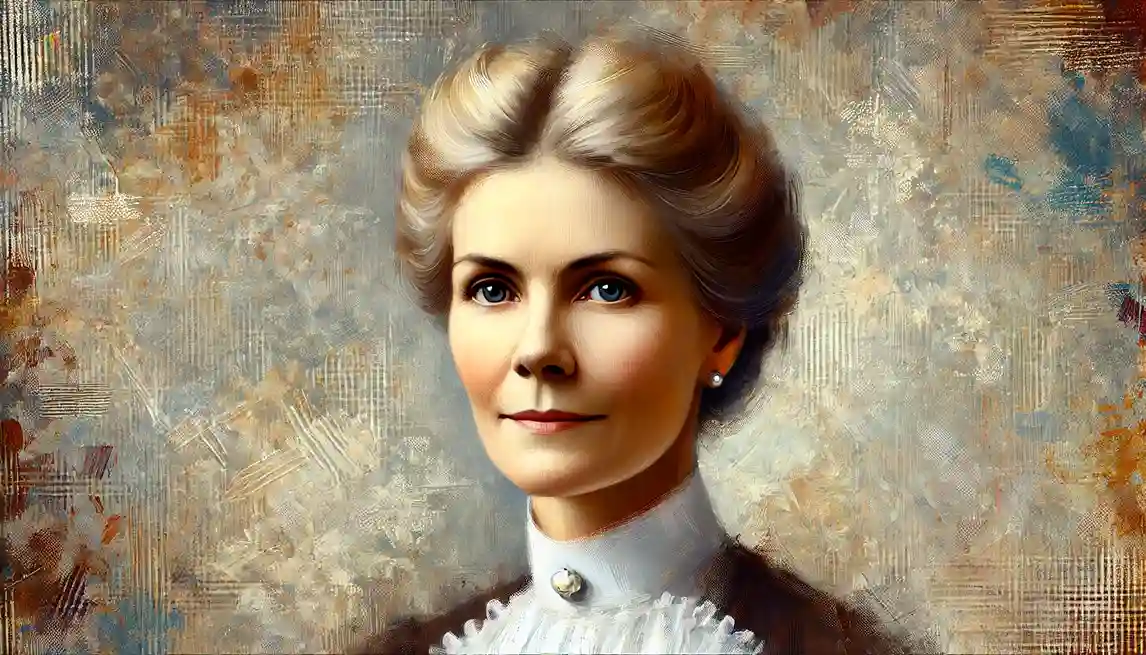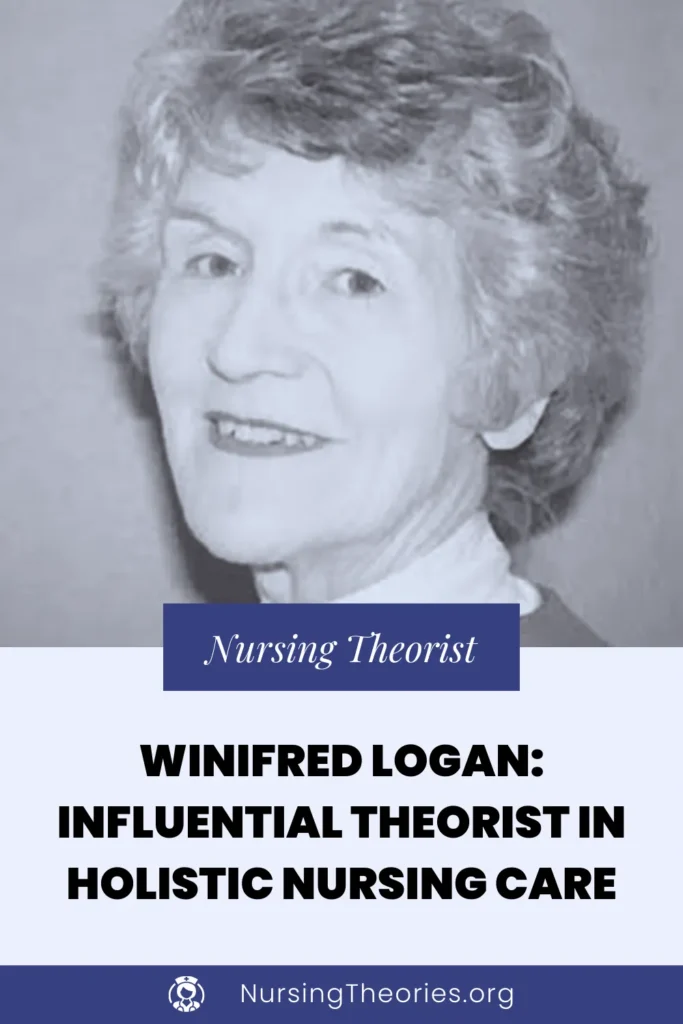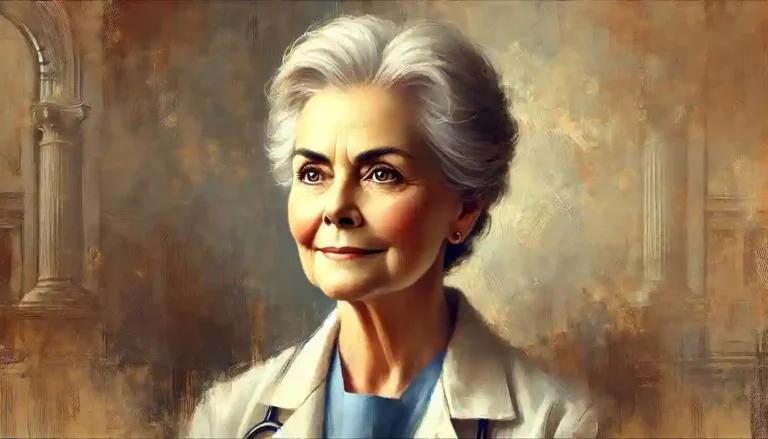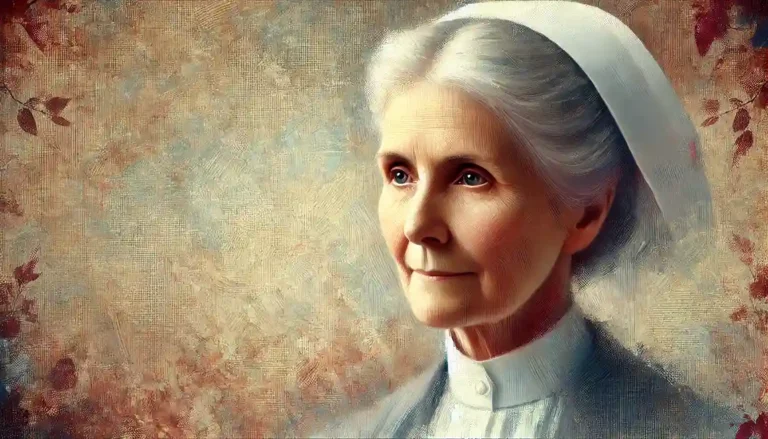Winifred Logan, an esteemed nurse theorist, educator, and researcher, is best known for her collaborative work with Nancy Roper and Alison Joan Tierney in developing the Roper-Logan-Tierney Model of Nursing.
This model emphasizes the importance of assessing patients’ ability to perform daily living activities and tailoring nursing interventions to promote independence and holistic care.
Together, Logan, Roper, and Tierney created a globally recognized framework that has profoundly influenced nursing education, research, and clinical practice.
In this article, we cover Winifred Logan’s life, achievements, philosophy, and lasting impact on nursing.

Quick Summary
- Co-developed the Roper-Logan-Tierney Model of Nursing, focusing on daily living activities and individualized care plans.
- Promoted holistic nursing assessments by addressing physical, emotional, and social dimensions of patient care.
- Advocated for nursing interventions that restore or maintain patients’ independence and quality of life.
- Published key works that remain foundational in nursing curricula worldwide.
- Recognized globally for her role in advancing evidence-based, patient-centered nursing.
Early Life and Background of Winifred Logan

Birth and Family Background of Winifred Logan
- Winifred W. Logan was born in Scotland and grew up in a close-knit family that valued education and community involvement.
- Her early exposure to healthcare and community service inspired her commitment to nursing.
Education and Early Influences in Logan’s Life
- Logan completed her initial nursing training in Scotland and later pursued advanced degrees in nursing and health sciences.
- Her academic background focused on patient assessments, rehabilitation, and promoting holistic well-being.
- Clinical experiences with patients recovering from illness or injury shaped her interest in developing a model to address their individual needs.
Winifred Logan’s Philosophy and Vision for Nursing
- Logan believed that nursing should aim to restore and maintain patients’ independence by addressing their ability to perform daily living activities.
- Her vision emphasized that holistic care involves understanding patients’ physical, emotional, and social experiences.
- Famous quote: “Nursing is about promoting the whole person, not just treating symptoms.”
Winifred Logan’s Education and Early Nursing Career
Formal Education and Nursing Training of Winifred Logan
- Logan’s education included advanced studies in nursing science, rehabilitation, and patient-centered care.
- Her training emphasized evidence-based assessments and interventions tailored to individual patients.
Early Professional Experiences in Logan’s Career
- Logan worked as a clinical nurse in various healthcare settings, where she observed the challenges patients faced in maintaining their independence.
- These experiences motivated her collaboration with Roper and Tierney to create a framework that addresses patients’ functional needs comprehensively.
Key Achievements and Contributions of Winifred Logan
Co-Creation of the Roper-Logan-Tierney Model of Nursing
- The model focuses on 12 activities of daily living (ADLs) that are essential for maintaining independence and well-being:
- Maintaining a safe environment
- Communicating
- Breathing
- Eating and drinking
- Eliminating
- Personal cleansing and dressing
- Controlling body temperature
- Mobilizing
- Working and playing
- Expressing sexuality
- Sleeping
- Dying (as a natural process of life)
- The model emphasizes that nurses should assess the impact of illness or injury on these activities and develop personalized care plans to support recovery and improve quality of life.
Contributions to Nursing Education and Curriculum Development
- Logan’s contributions to integrating the model into nursing curricula have helped generations of nurses adopt a holistic, patient-centered approach to care.
- She collaborated on developing teaching resources and clinical guidelines to ensure the model’s effective application.
Research and Theoretical Advancements
- Logan conducted research on patient rehabilitation, independence, and the role of nursing in promoting recovery.
- Her studies demonstrated that holistic assessments using the model lead to better patient outcomes and satisfaction.
Global Impact and Recognition
- The Roper-Logan-Tierney Model has been adopted in healthcare settings globally, influencing nursing education, research, and clinical practice.
- Logan received numerous honors for her contributions to developing nursing assessment tools and promoting individualized care.
Overview of Winifred Logan’s Role in the Roper-Logan-Tierney Model
- Logan played a key role in applying the model to rehabilitation and patient-centered interventions, ensuring its practical relevance in diverse clinical settings.
- By emphasizing holistic assessments, the model promotes comprehensive care that meets the physical, psychological, and social needs of patients.
- To explore this theory in greater depth, visit the in-depth article on the Roper-Logan-Tierney Model.
Notable Publications by Winifred Logan
- The Elements of Nursing – Co-authored with Roper and Tierney, this foundational text outlines the principles of the model and its applications.
- Numerous articles on rehabilitation nursing, patient-centered care, and individualized interventions.
Challenges and Criticisms of Winifred Logan’s Work
Challenges in Applying the Model in Complex Settings
- Some nurses have found it challenging to apply the model comprehensively in high-pressure environments such as emergency care.
- Logan emphasized that prioritizing patient needs and tailoring interventions accordingly is essential in such settings.
Criticisms of the Model’s Generalization
- Critics argue that the model’s general structure may not fully address unique or complex cases.
- However, proponents highlight its flexibility and adaptability in accommodating individual patient needs.
Timeline of Major Milestones in Winifred Logan’s Life
- 1930s: Born in Scotland.
- 1950s: Completed nursing training and began her clinical career.
- 1970s: Collaborated with Nancy Roper and Alison Tierney to develop the Roper-Logan-Tierney Model.
- 1980s: Published The Elements of Nursing with Roper and Tierney.
- Present: Continues to influence nursing education and research through her contributions.
Legacy and Lasting Impact of Winifred Logan
Impact on Nursing Practice and Patient Care
- Logan’s work has improved nursing assessments and interventions by promoting holistic, individualized care.
Global Influence and Recognitions
- Her collaborative work with Roper and Tierney has established the Roper-Logan-Tierney Model as a global standard in nursing practice.
- Logan’s contributions have earned her recognition as a pioneer in holistic and rehabilitation-focused nursing care.
Final Years and Ongoing Work of Winifred Logan
- Logan continues to mentor nursing students and contribute to research on improving nursing assessments and patient outcomes.
- Her ongoing work highlights the importance of adapting holistic models to the evolving needs of healthcare.
Key Lessons from Winifred Logan for Modern Nursing
- Holistic assessments: Addressing physical, emotional, and social factors leads to comprehensive patient care.
- Rehabilitation focus: Supporting patients in regaining independence is central to improving quality of life.
- Flexible interventions: Tailoring nursing care to individual needs enhances recovery and patient satisfaction.
- Interdisciplinary collaboration: Working with healthcare teams ensures well-rounded, effective interventions.
- Continuous improvement: Nurses should engage in ongoing learning to refine and enhance care delivery.
Conclusion
Winifred Logan’s collaborative work with Nancy Roper and Alison Tierney in developing the Roper-Logan-Tierney Model has profoundly influenced nursing practice by promoting holistic, patient-centered care.
Their model, explored further in the in-depth article on the Roper-Logan-Tierney Model, continues to guide nurses worldwide in providing individualized and effective care.
Logan’s legacy, alongside her partners, endures as a vital contribution to improving patient outcomes and promoting independence in diverse healthcare settings.



